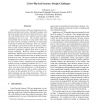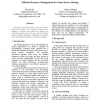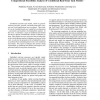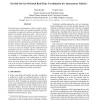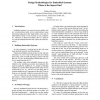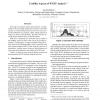ISORC
2008
IEEE
14 years 8 months ago
2008
IEEE
Cyber-Physical Systems (CPS) are integrations of computation and physical processes. Embedded computers and networks monitor and control the physical processes, usually with feedb...
ISORC
2008
IEEE
14 years 8 months ago
2008
IEEE
This paper describes work to ease the resource allocation problem in the domain of game server hosting. A solution was sought that required no alteration to game server code and w...
ISORC
2008
IEEE
14 years 8 months ago
2008
IEEE
Conditional real-time task models, which are generalizations of periodic, sporadic, and multi-frame tasks, represent real world applications more accurately. These models can be c...
ISORC
2008
IEEE
14 years 8 months ago
2008
IEEE
Abstract: For cost-effective realization of sizable realtime distributed computing application systems, significant advances in resource allocation are in critical needs. An advanc...
ISORC
2008
IEEE
14 years 8 months ago
2008
IEEE
The performance of autonomous vehicles could be drastically improved if ad-hoc networking and suitable real-time coordination is employed to optimize and improve the joint behavio...
ISORC
2008
IEEE
14 years 8 months ago
2008
IEEE
Effective resource management for distributed real-time embedded (DRE) systems is hard due to their unique characteristics, including (1) constraints in multiple resources and (2)...
ISORC
2008
IEEE
14 years 8 months ago
2008
IEEE
ISORC
2008
IEEE
14 years 8 months ago
2008
IEEE
Knowing the program timing characteristics is fundamental to the successful design and execution of real-time systems. A critical timing measure is the worst-case execution time (...
ISORC
2008
IEEE
14 years 8 months ago
2008
IEEE
Java, as a safe and platform independent language, avoids access to low-level I/O devices or direct memory access. In standard Java, low-level I/O it not a concern; it is handled ...
ISORC
2008
IEEE
14 years 8 months ago
2008
IEEE
The analysis of the worst-case execution time (WCET) requires detailed knowledge of the program behavior. In practice it is still not possible to obtain all needed information aut...
